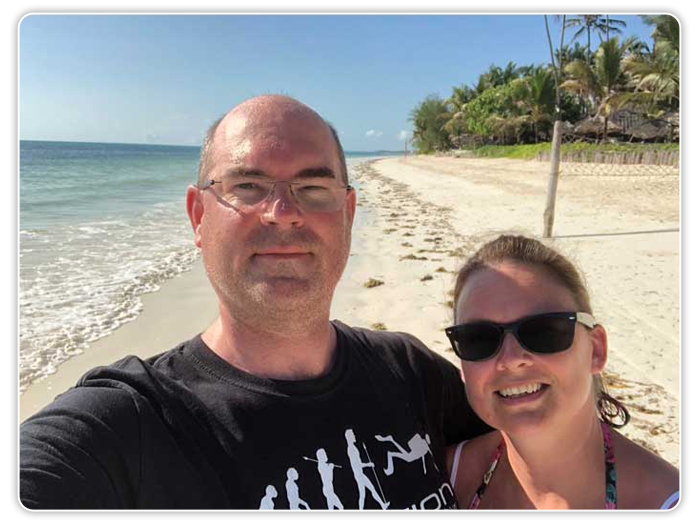Fixing Follow Up Failure
Mary sells Juan a $20 ebook on how to deal with his son’s ADHD.
Juan loves the book because it’s shown him several techniques to help his son without resorting to pharmaceuticals. Now Juan wants more – he wants personal coaching from someone he trusts so that he can do everything possible for his son. He loves his son dearly and money is no object.
But Mary doesn’t offer coaching. Juan finds another ADHD expert and purchases a $1,000 coaching program for 6 months.
Mary may have made $20, but she just lost $6,000.
But that couldn’t happen to you, right?
Hopefully you have at least one premium product to offer your customers and raving fans. After all, it takes a great deal of time and even money to win over a new customer these days. Once you have them, of course you’re not going to be silly enough to sell them a $20 or $50 product and then forget them.
Right?
RIGHT?
Here’s what I see time and time again. A new marketer puts all of his or her time and energy into making a great product. The product sells for less than a hundred bucks.
They make sales. They now have paying customers. And what do they do next?
They promote similarly priced affiliate products to their buyers. Sure, low-priced affiliate products are great and you should definitely promote them if you want to, but you’re leaving some serious money on the table if you do only that. Your customers have learned to trust YOUR work. They want more of your stuff, and some of them are willing to pay big $$$ for it. So why not give them that chance?
Let’s go back to Mary and Juan. Juan purchases Mary’s low-ticket offer and he’s happy. Mary then systematically follows us with Juan, sending him tips and offering her help. Juan sees that Mary not only knows her stuff; she’s also offering to be of further assistance. Maybe Mary offers a free 15-minute coaching session. Juan eagerly makes an appointment. Now they are on the phone or Skype together, and Juan quickly realizes Mary can help him. She offers her coaching program, and Juan signs up on the spot.
Okay, maybe this is too much for you at this point in time. Maybe the thought of doing one-on-one calls freaks you out just a little bit. You were hoping you could stay semi-anonymous on the internet and still make good money.
I’ll let you in on a secret; the more personal you get with your customers, the more money they will spend with you.
This means you’ve got to let them in. Show them your personality, let them hear your voice and even see your face (unless you’re in witness protection, in which case, forget this advice.)
Get personal and you will make more money. But I digress; let’s get back to fixing follow up failure.
For now, let’s say you don’t have a higher priced program to offer. You don’t have a course or personal coaching or any of that. That’s still no excuse for not systematically nudging your customers towards higher priced products.
Do a little searching and you’ll find plenty of high ticket items in almost any niche that you can promote. Find something that you really, truly believe in and sign up to become an affiliate.
Now ask yourself what you would have to know to purchase this high-priced product yourself. How would a marketer guide you from buying a low-ticket item all the way up to purchasing this $1,000 or $5,000 program?
Here’s what I might suggest:
Create a lead magnet that perfectly compliments the high-ticket item. Maybe it’s a $2,000 program on how to become a social media marketing expert and hire yourself out to other businesses. Your lead magnet might be, “How to earn $100,00 a year being a social media manager.”
On the back of this free offer, have a paid offer that teaches them more about social media marketing. It might be a general overview of several social media channels and how they work, or a more in-depth course on just one social media channel.
You see how this is working…
You’re targeting the exact people who want to spend that $2,000 on the program. You’re setting yourself up as an expert on social media marketing (even if you’re not an expert) by giving great content.
Now start following up. Show them how great it is to be a social media marketing manager or consultant. Give them stories of other people who have succeeded doing this. Give them tips on what to do (but not on how to do it.)
Always be offering that big-ticket item, but not overtly. More of a, “when you’re ready” kind of thing. Then once every so often, make a big push complete with bonuses.
If you’re up for it, offer free 15-minute consultations. Your main goal during these consultations is to find out what they want. If the $2,000 program will meet their needs, tell them. Explain that if you were to teach them one-on-one everything in that program, you would have to charge 5 times a much.
And while you’re doing all of this, you can still be promoting the $20 items and the $97 items, too.
But most of all, be their trusted source and let them know that if they are serious about their future, then they need that course.
This is so simple… I don’t know why every marketer doesn’t do it.
Let’s look at how to make $100,000, assuming you’re an affiliate earning 50% commission:
- Sell 20,000 products $10
- Sell 2,000 products at $100
- Sell 200 products at $1,000
- Sell 100 products at $2,000
- Sell 20 products at $10,000
And if you’re selling your own products, the numbers look like this:
- Sell 10,000 products $10
- Sell 1,000 products at $100
- Sell 100 products at $1,000
- Sell 50 products at $2,000
- Sell 10 products at $10,000
Another way to look at it:
Over the course of a year you sell 1,000 products at $20.
If you do nothing else, you’ve earned $20,000.
But let’s say you also follow up and sell 100 products at $200.
You’ve just doubled your income, without getting a single extra customer.
And you follow up some more, and you sell 10 products at $2,000.
Now instead of a $20,000 year, you’ve had a $60,000 year.
Your results will vary. In my experience, these numbers are super conservative, but it all depends on a lot of different things.
But I can tell you this: You won’t sell a single high-ticket item if you don’t follow up with your customers and make the offer.
One more thing – in the examples above I used the traditional funnel method of starting with a low-priced product and working up to a high-priced product.
But I’ve also seen marketers give away a LOT of stuff and only sell the high-ticket items. They don’t bother with the $20 offers, and yet they sell plenty of the $1,000 + products.
This can work in a variety of ways. The key is to realize that you CAN sell high ticket items. It’s just a matter of getting comfortable with the idea.
I’ve heard from plenty of marketers over the years who say, “Yeah, but my list won’t buy high ticket items.” That’s rubbish. Every list has a variety of people who will spend anywhere from $0 to $100,000 or more.
But what every list doesn’t have is a list owner who is willing to make the big offers.
Follow up with your subscribers and customers. Find out what they want. Find the solution that will give them what they need; it’s often a high-ticket item because the low-ticket items are really just band-aids.
And then offer it to them and reap the results.
You got this. Now go do it.
What This Guy Stumbled Across By Accident Nearly TWENTY YEARS AGO Is Anything But Average.

It's Still Banking Him $25,000 - $35,000 EVERY SINGLE MONTH!
Privacy Policy: We value your privacy. You can unsubscribe from receiving future emails with 1 click at any time.

















